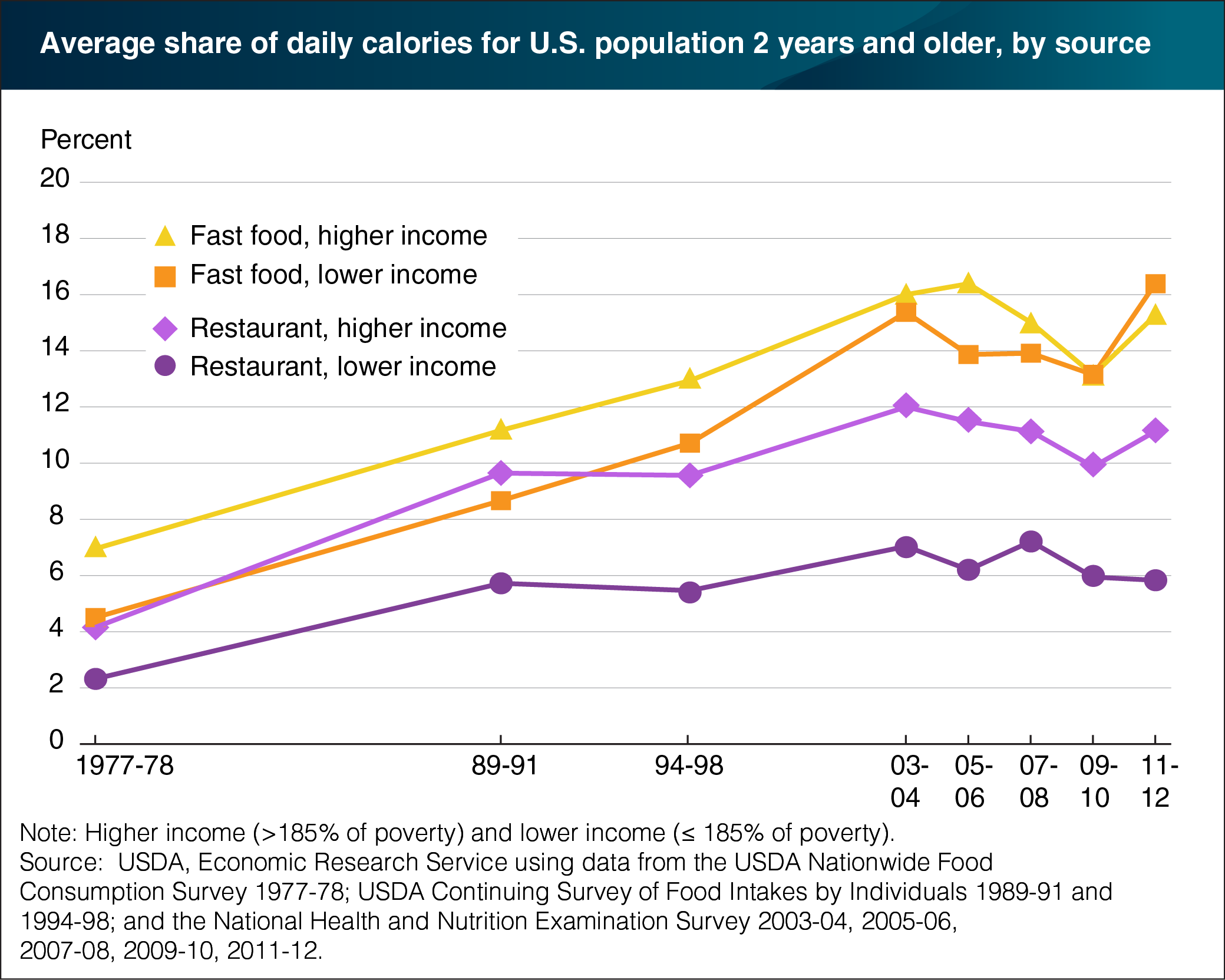Across income groups, fast food largest source of food-away-from-home calories
- by Joanne Guthrie and Biing-Hwan Lin
- 10/21/2016

Federal food intake surveys conducted between 1977 and 2012 reveal that meals and snacks from fast food places accounted for more of Americans’ away-from-home calories than food from full-service restaurants, school cafeterias, or other away-from-home eating places. In 1977-78, eating places with no wait staff (fast food) provided 5.7 percent of daily calories for those age 2 and older, while food prepared by restaurants with wait staff provided 3.2 percent. By 2011-12, fast food’s share of calories had increased to 15.8 percent, while restaurant foods provided 8.9 percent of daily calories. Fast food’s ranking as the largest contributor to away-from-home calories held true for both higher income individuals (household income above 185 percent of the Federal poverty line) and individuals with incomes below that amount. In all of these surveys, higher income consumers obtained a larger share of their calories from foods prepared by restaurants (11.2 percent in 2011-12) than did lower income consumers (5.8 percent in 2011-12). This chart appears in “Linking Federal Food Intake Surveys Provides a More Accurate Look at Eating Out Trends” in the June 2016 issue of ERS’s Amber Waves magazine.

